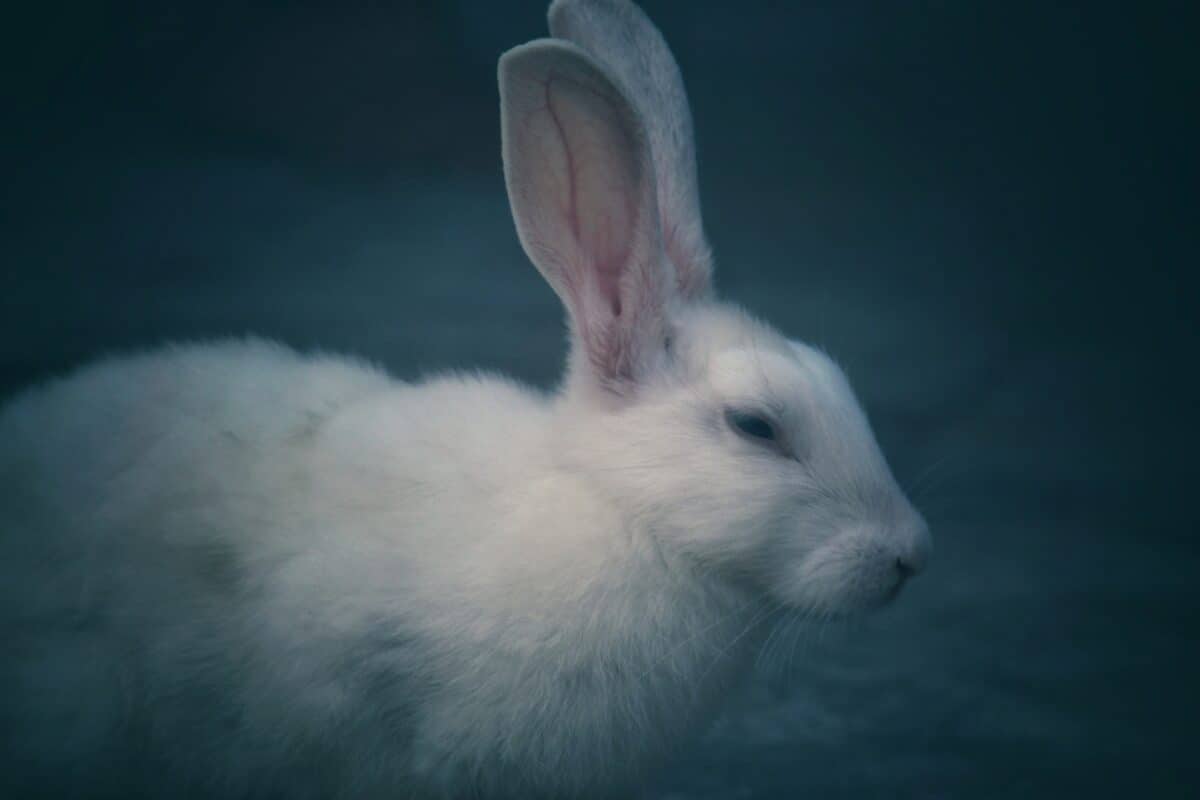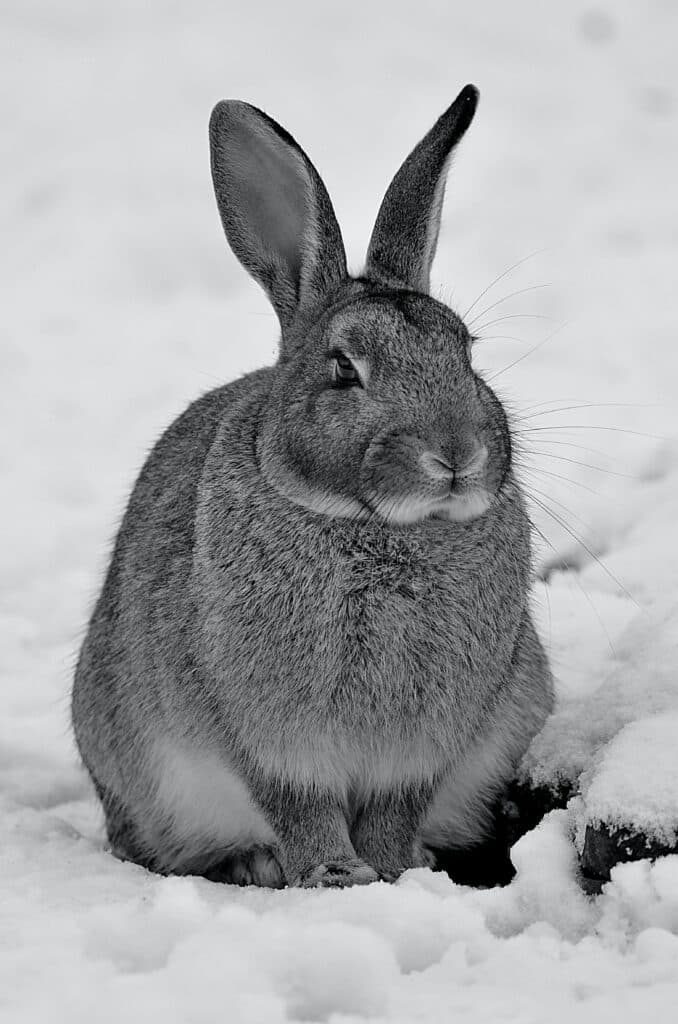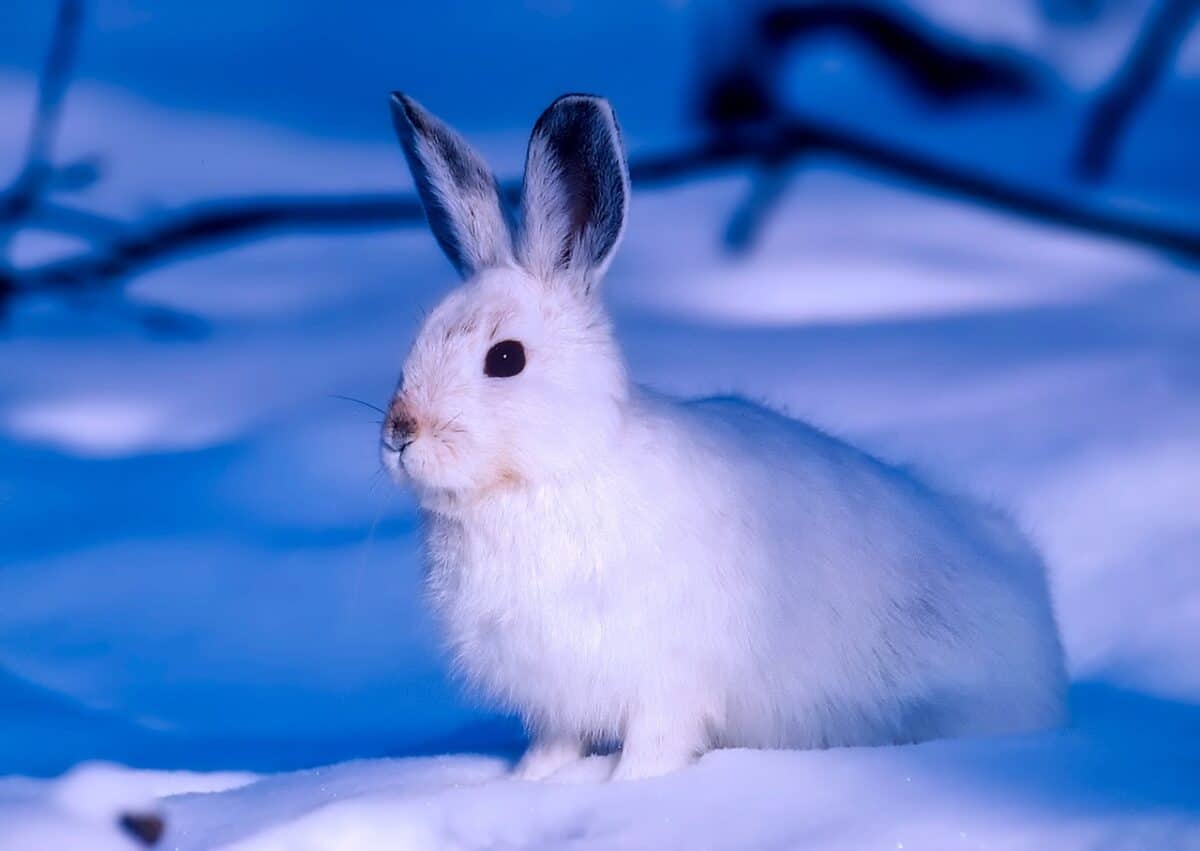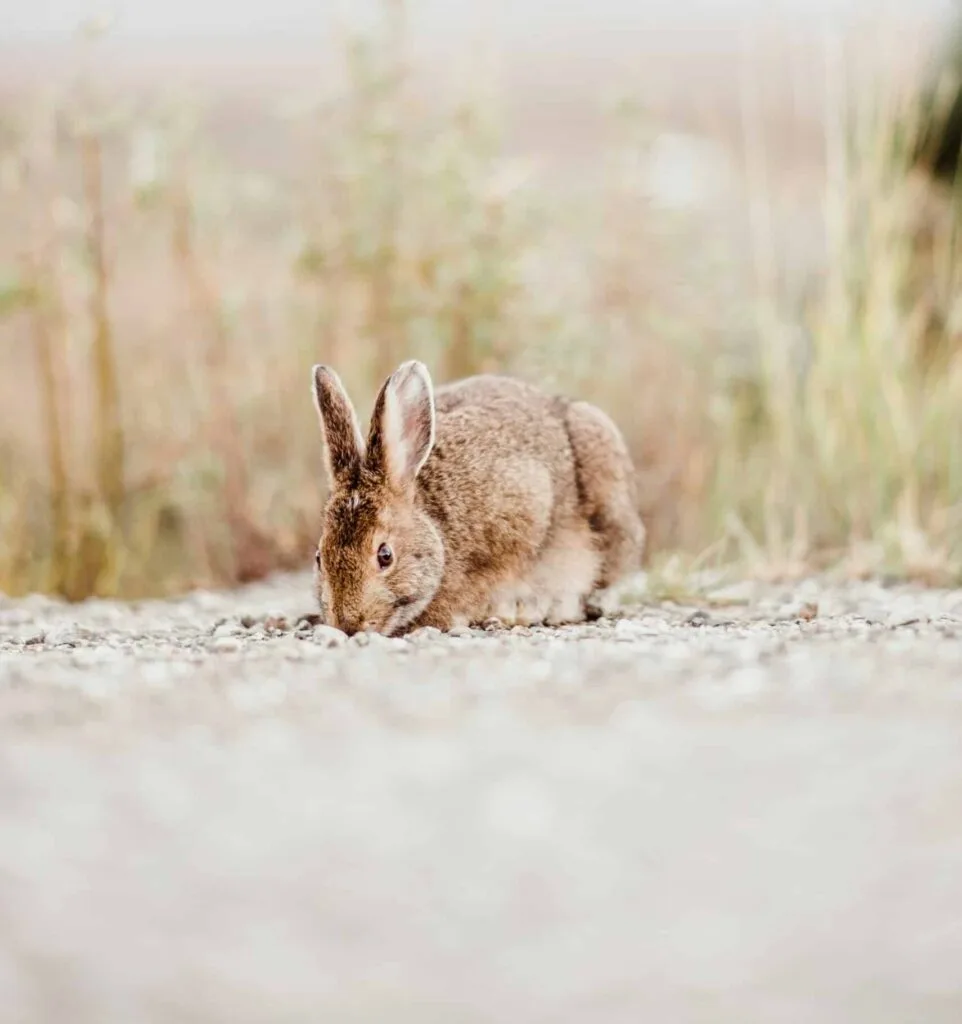Step into the enchanting Arctic hare, where a creature of exceptional resilience and cuteness thrives—the Arctic hare! The Arctic hare perfectly suits life in the frozen north with its snowy-white fur and incredible adaptations.
In this piece, we will explore the fascinating realm of this extraordinary species, delving into its physical characteristics, behavior, and strategies for survival. Join us as we rake through the many secrets of the Arctic hare and gain a deeper appreciation for the wonders of nature.
Appearance and Adaptations

When you catch sight of an Arctic hare, you realize several things about its appearance, which include the fact that it’s adorable. These hares sport a thick, snowy-white coat during winter, seamlessly blending with their icy surroundings.
But did you know their fur undergoes a fascinating transformation with the changing seasons? In summer, their coats adopt a gray or brown hue, providing camouflage against the rocky terrain. Beyond their striking fur, Arctic hares possess specialized adaptations to brave the harsh Arctic conditions.
Their fur is thick and incredibly dense, acting as a superb insulator. Their large hind legs also enable them to leap across the snow-covered landscape with remarkable speed and agility.
Habitat and Distribution
The Arctic hare is a true inhabitant of the extreme north, predominantly found in Arctic regions such as Greenland, Canada, and Alaska. These resilient creatures have adapted to thrive in various habitats, including tundras, coastal regions, and Arctic islands.
Their natural homes often feature low-growing vegetation, providing a bountiful food source. Arctic hares are known to create burrows, which serve as basic shelters from the bitter cold and harsh winds.
These burrows can be extensive, comprising multiple entrances and tunnels, providing protection and a cozy retreat.
Behavior and Social Structure

While Arctic hares are generally solitary animals, they exhibit interesting behavioral patterns. They mark their territories with scat and urine, signaling their presence and warding off potential intruders.
During mating season, male hares engage in fierce battles, competing for the attention of females. These battles involve impressive displays of aggression, with males standing on their hind legs and boxing with their front paws.
On the other hand, female hares are highly selective, choosing mates based on physical prowess and dominance.
Diet and Feeding Habits
Despite their seemingly desolate surroundings, Arctic hares have an abundant food supply in their Arctic habitats. They are herbivores with a diverse diet consisting mainly of grasses, sedges, and woody plants.
These resilient hares have developed specialized adaptations to efficiently extract nutrients from their plant-based diet. Their teeth are well-suited for grinding tough plant material, while their digestive systems are designed to process cellulose effectively.
These adaptations allow them to extract the maximum nutrition from their food, ensuring survival in the challenging Arctic environment.
Survival Strategies
Surviving in the Arctic requires various tactics, and the Arctic hare has developed some remarkable ones. One of their primary survival techniques is their exceptional hiding skills
The Arctic hare’s white fur helps them hide in the snowy environment, making it hard for their enemies like Arctic foxes and wolves to spot them.
Arctic hares have the ability to quickly change the color of their fur to match their environment as the seasons change. This helps them blend in and stay hidden in the changing Arctic environment, which is important for their survival.
These hares also have keen senses, enabling them to detect predators from a distance and respond swiftly, either by freezing or using their powerful legs to escape in a burst of speed.
Reproduction and Life Cycle

The arctic hare’s reproduction and life cycle are remarkable adaptations to the harsh Arctic environment.
Breeding typically occurs in the short summer months when the hares’ white fur transitions to a grayish-brown color, allowing them to blend in with the tundra vegetation.
Female hares give birth to several litters yearly, with an average of six leverets per litter. These young hares are precocial, meaning they are born fully furred and with their eyes open, ready to explore their surroundings shortly after birth.
This rapid development helps them navigate the limited time window for growth and survival in the Arctic.
Conservation Status and Threats
Arctic hares are currently experiencing a steady conservation status with no significant decline.
However, they face potential threats due to climate change and hunting. The loss of their natural habitat, alteration of the delicate Arctic ecosystem, and declining prey populations could impact their long-term survival.
Furthermore, hunting for fur and sport continues to threaten their populations. To ensure the long-term survival of the Arctic hare, it is crucial to promote the importance about their nature and natural requirements and enact plans to preserve their delicate ecosystems.
Interesting Facts About The Arctic Hare
The Arctic hare is a creature full of intriguing and unique characteristics. Let’s dive into some fascinating facts that highlight the wonder of these incredible creatures:
1. Speedy Escapes: The Arctic hare is renowned for its incredible agility and speed, and they can speed up to (which means ‘hop’, more or less) 40 miles per hour when evading predators.
2. Energetic Leapers: Not only are Arctic hares fast runners, but they are also excellent jumpers. These hares can leap up to 10 feet (3 meters) in a single bound, enabling them to easily navigate the Arctic region’s uneven landscape.
3. Population Boom: The Arctic hare population has a remarkable ability to undergo population explosions known as “hare waves.”
4. Lifespan Adaptation: To cope with the challenging Arctic environment, Arctic hares have adapted to have a relatively short lifespan compared to other hare species.
5. Seasonal Color Transformation: Along with their ability to change fur color during seasonal transitions, Arctic hares also have another fascinating color-related adaptation.
6. Cool Ears: Arctic hares possess an interesting adaptation to regulate their body temperature. Their ears have specialized blood vessels that act as heat exchangers.
7. Deep Divers: When faced with danger, Arctic hares have been seen diving into snow tunnels to escape dangers.
These fascinating facts reveal the extraordinary abilities and adaptations of the Arctic hare, making them an incredible species that help provide to the rich background of Arctic life.
Further, explore the enchanting world of Arctic wildlife with National Geographic here!
Summary Table: The Arctic Hare: A Fascinating Creature of the Frozen North
Key Aspects
| Aspect | Description |
|---|---|
| Appearance | Snowy-white fur in winter, gray/brown in summer |
| Adaptations | Thick fur for insulation, large hind legs for speed and agility |
| Habitat and Distribution | Arctic regions (Greenland, Canada, Alaska), tundras, coastal areas, and Arctic islands |
| Behavior and Social Structure | Solitary, mark territories, fierce mating battles |
| Diet and Feeding Habits | Herbivores, eat grasses, sedges, and woody plants |
| Survival Strategies | Excellent camouflage, rapid color change, keen senses for predator detection and escape |
| Reproduction and Life Cycle | Stable conservation status, threats from climate change, and hunting |
| Conservation Status and Threats | Stable conservation status, threats from climate change and hunting |
| Interesting Facts | Speedy escapes, energetic leapers, population explosions, short lifespan, seasonal color transformation, cool ears, deep divers |
The Bottom Line
The Arctic hare is an amazing creature with white fur and impressive skills. They have special fur and make good burrows.
They also have interesting behaviors and eat plants. These hares show how animals can adapt to tough environments. It’s important for us to protect their homes and help them survive. By learning more about them and caring for them, we can help protect their environment.
Thanks for following along with us! Next up, Baby Deer, Baby Rabbits, The Aurochs – Unleashing The Primordial Fury
- Python vs. Chinese Cobra - April 8, 2024
- Unveiling the Enchantment of Kruger National Park - December 13, 2023
- Animals That Pose a Threat to Humans - November 20, 2023







